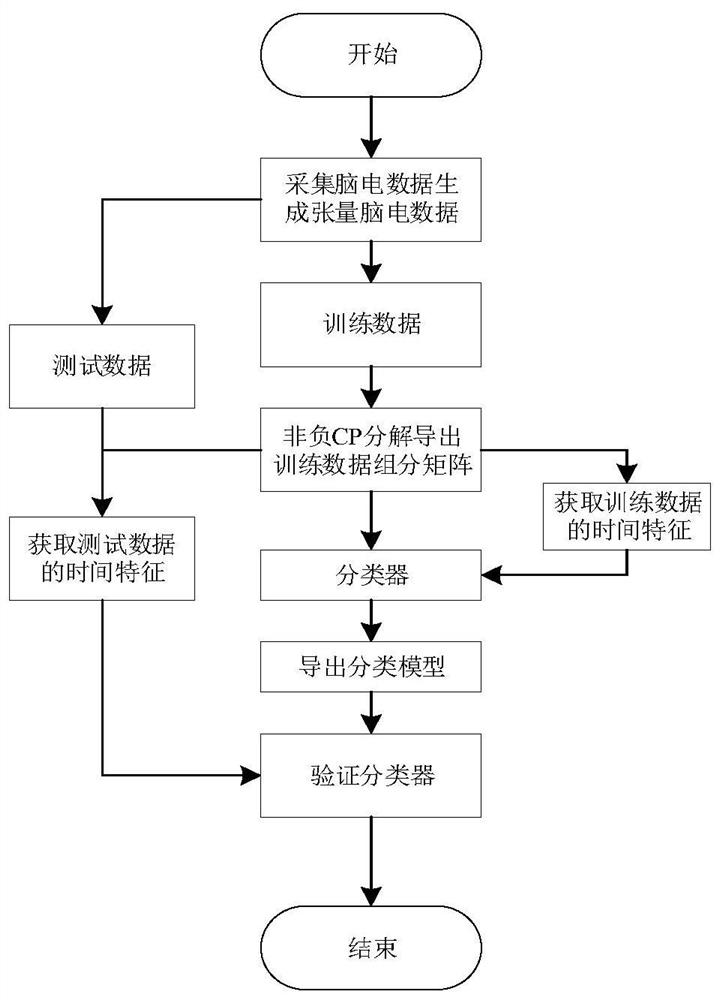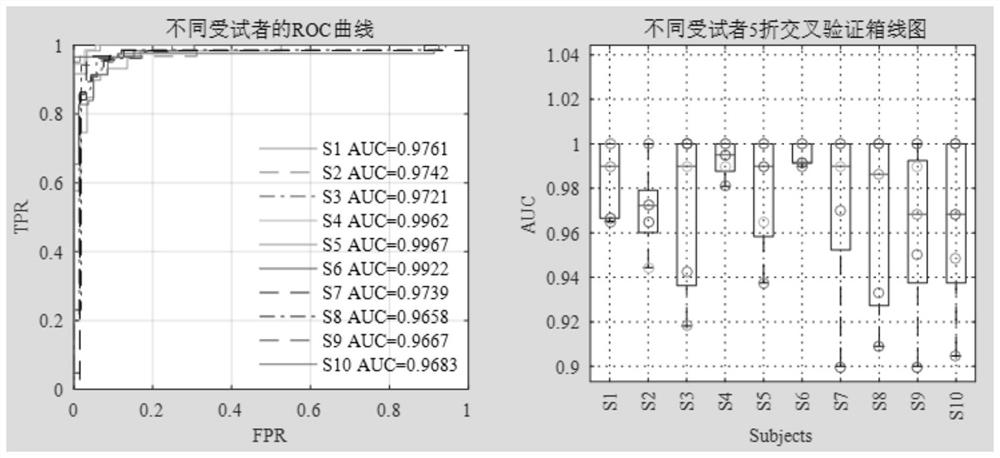EEG intent decoding method based on non-negative cp decomposition model
A decoding method and EEG technology, applied in the fields of biological signal processing and pattern recognition, which can solve problems such as ignoring interactions
- Summary
- Abstract
- Description
- Claims
- Application Information
AI Technical Summary
Problems solved by technology
Method used
Image
Examples
Embodiment Construction
[0032] Hereinafter, embodiments of the present invention will be described with reference to the drawings.
[0033] A kind of EEG intention decoding method based on non-negative CP decomposition model of the present invention, its overall flow chart is as follows figure 1 As shown, the method includes the following steps:
[0034] Step 1, truncate the EEG data successively, and select an 8-13Hz bandpass filter for filtering, and use the bandwidth parameter as f b = 2Hz complex Morlet wavelet to obtain the frequency components of EEG and construct fourth-order tensor data Wherein, c represents the channel, f represents the frequency, t represents the time, and s represents the experiment. In this embodiment, s is 120, including 60 left and right hand EEG data;
[0035] Using 5-fold cross-validation to select the test set and training set, the left and right hand EEG data are randomly divided into 5 groups along the direction of the experimental mode, and each group of data i...
PUM
 Login to View More
Login to View More Abstract
Description
Claims
Application Information
 Login to View More
Login to View More - R&D
- Intellectual Property
- Life Sciences
- Materials
- Tech Scout
- Unparalleled Data Quality
- Higher Quality Content
- 60% Fewer Hallucinations
Browse by: Latest US Patents, China's latest patents, Technical Efficacy Thesaurus, Application Domain, Technology Topic, Popular Technical Reports.
© 2025 PatSnap. All rights reserved.Legal|Privacy policy|Modern Slavery Act Transparency Statement|Sitemap|About US| Contact US: help@patsnap.com



